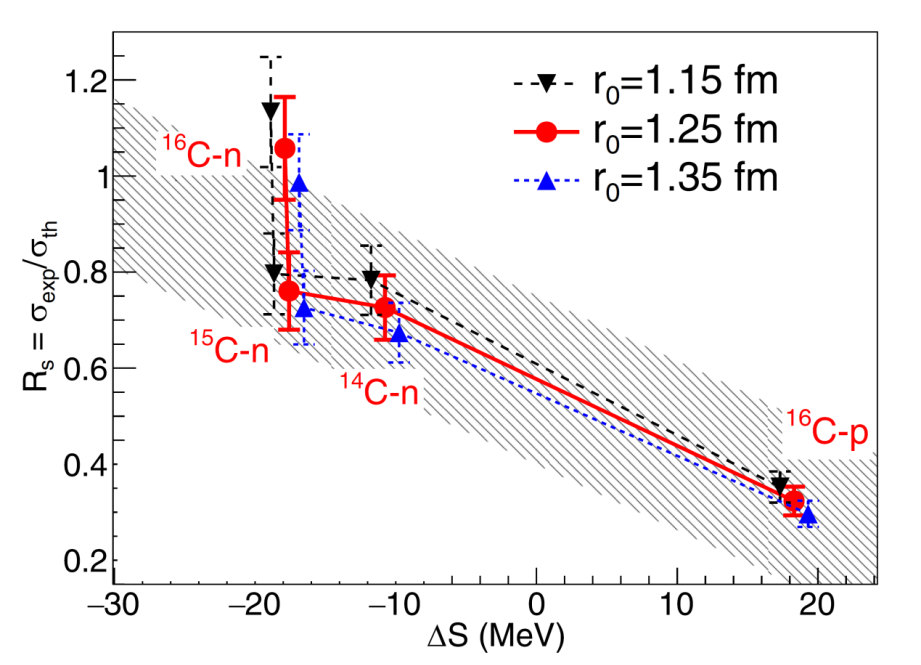Reviewed by Alex SmithSep 6 2021
At the Institute of Modern Physics (IMP) of the Chinese Academy of Sciences (CAS), researchers have systematically quantified the knockout cross-sections of neutron-rich carbon isotopes at the intermediate- to high-energy region.
 Isospin asymmetry dependence of the ratio of experimental to theoretical single-nucleon knockout cross-sections. The hatched area denotes the systematics from experiments of intermediate energy (<100MeV/u). Image Credit: Physical Review C.
Isospin asymmetry dependence of the ratio of experimental to theoretical single-nucleon knockout cross-sections. The hatched area denotes the systematics from experiments of intermediate energy (<100MeV/u). Image Credit: Physical Review C.
The researchers and their collaborators performed this by making use of the External Target Facility (ETF) of the Cooler Storage Ring (CSR) at the Heavy Ion Research Facility in Lanzhou (HIRFL).
Knockout reactions stimulated by light nuclear targets have been shown as a robust tool for investigating the single-particle structure of rare isotopes distant from the stability line. The spectroscopic factors for unstable isotopes have been investigated with the help of knockout reactions at intermediate energies ranging below 100 MeV/u.
The researchers discovered that the quantified spectroscopic factors obtained for strongly bound nucleon knockout are far less compared to those evaluated by the reaction model.
The beam’s high energy is considered vital for the applicability of the reaction model that makes use of the eikonal and sudden approximations. Therefore, it would be of significant value to study such reactions at greater beam energies.
The radioactive ion beam line called RIBLL2 at HIRFL-CSR is one of the few facilities worldwide with the potential to offer radioactive ion beams at intermediate- to high-energy (200-1000 MeV/u). In this study, neutron-rich 14-16C beams with energies close to ~240 MeV/u were generated by RIBLL2.
The induced knockout reactions were studied by the scientists using these neutron-rich isotopes with the large-acceptance magnetic spectrometer ETF. The beam-energy dependence of the reduction on the extracted spectroscopic strength was also analyzed.
The single-nucleon knockout findings denote that the extracted spectroscopic factors do not exhibit apparent reliance on beam energy and indicate that the deduced spectroscopic factors are powerful for variations in beam energy at the intermediate energy region. This boosts the confidence to apply the eikonal model for knockout reactions at beam energies close to or above 100 MeV/u.
This study was financially supported by the Open Research Project of CAS Large Research Infrastructures and the National Natural Science Foundation of China.
Journal Reference:
Sun, Y. Z., et al. (2021) Single-neutron removal from 14,15,16C near 240 MeV/nucleon. Physical Review C. doi.org/10.1103/PhysRevC.104.014310.